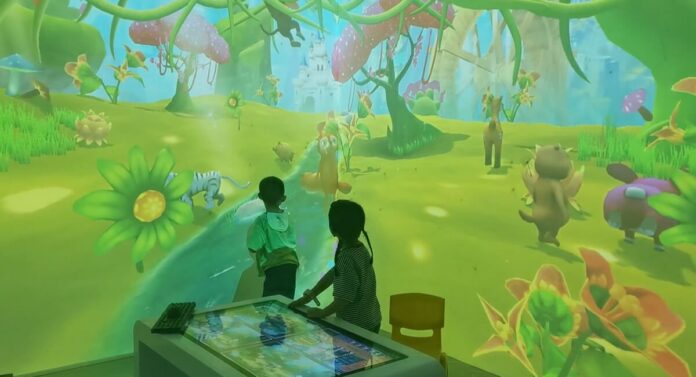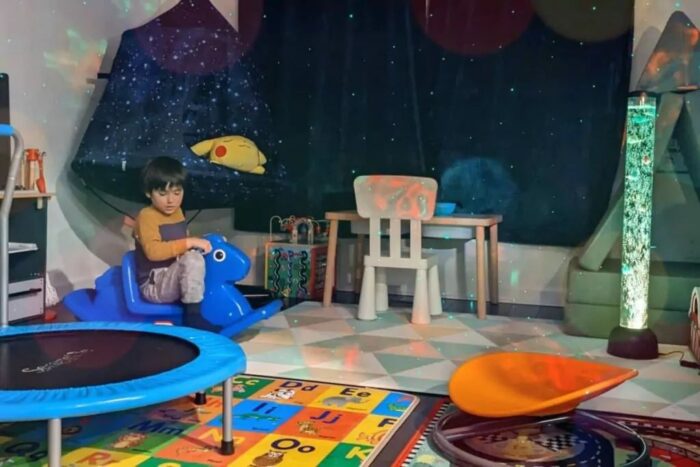
Designing a sensory-friendly bedroom for a child with autism is essential in creating a calming and functional environment that caters to their unique sensory needs. Sensory processing challenges are common among children with autism, meaning that their surroundings can either help regulate their emotions or lead to sensory overload.
While companies like Interactive 365 provide comprehensive solutions for sensory rooms, this article will show you how to integrate similar features into your child’s bedroom in a practical, personalized way.
A well-designed sensory bedroom offers a safe, comforting space where a child can rest, play, and self-regulate. By incorporating key elements that cater to the senses — touch, sight, sound, and movement — you can transform a simple bedroom into a therapeutic sanctuary.
Creating a Calming Atmosphere

One of the most important aspects of a sensory bedroom is its overall atmosphere. Children with autism are often sensitive to visual stimuli, so it’s crucial to avoid overly bright or chaotic décor. Opt for soft, neutral tones like light blues, greens, or greys, which can promote calmness. Additionally, lighting should be dimmable or adjustable. String lights, lava lamps, or soft night lights can offer soothing alternatives to harsh overhead lights, giving you the flexibility to adapt the lighting based on your child’s needs.
Another way to enhance the calming atmosphere is through scents. Using aromatherapy with scents like lavender or chamomile can help your child relax before bedtime. Essential oil diffusers or sprays are easy ways to introduce these calming scents into the bedroom. However, be mindful of any sensitivities your child may have to specific smells and always opt for natural, hypoallergenic products.
Incorporating Tactile Elements

A sensory bedroom should include a variety of textures that your child can touch and interact with, providing both comfort and stimulation. Soft bedding, such as weighted blankets or fleece sheets, can offer deep pressure input, which many children with autism find calming. Consider using textured pillows, rugs, or bean bag chairs to give your child a variety of surfaces to explore.
Tactile elements can also be incorporated through sensory toys and tools. Stress balls, fidget toys, and squishy objects can be placed around the room for easy access. These tools provide an outlet for sensory-seeking behaviours, helping your child focus or self-soothe. In this way, you can create an environment that actively engages your child’s tactile sense while also offering comfort.
Choosing the Right Furniture and Layout
Open, clutter-free spaces can help reduce sensory overload and allow your child to feel more in control of their environment. When selecting furniture, aim for simplicity. A low bed, open shelving, and clear pathways allow for easy navigation and reduce potential hazards, especially if your child engages in frequent stimming or needs to move around the room to self-regulate.
Consider furniture that serves multiple purposes. For example, a rocking chair or swing can offer vestibular stimulation, helping children improve balance and coordination. Interactive 365, a company specializing in sensory rooms, offers a range of high-quality sensory furniture designed to meet the needs of neurodivergent children. These items can add therapeutic value to the bedroom, turning it into a space for both rest and sensory engagement.
Sensory Zoning for Self-Regulation
Sensory zoning divides the bedroom into specific areas that serve different purposes. Designate a corner or space for relaxation with a bean bag or small tent, where children can retreat if they feel overwhelmed. A movement zone, with a mini trampoline or swing, offers a place to release energy safely.
Tips for Sensory Zoning:
- Use a calming corner for downtime, incorporating soft textures and dim lighting.
- Create a movement space, using equipment like trampolines for safe physical activity.
- Include a focus area with a desk and tactile tools for calm, directed activities.
Budget-Friendly Tips for Setting Up a Sensory Bedroom

Creating the perfect sensory bedroom doesn’t have to be expensive. There are plenty of affordable ways to design a space that supports your child’s sensory needs. Here are a few tips to help you stay within your budget:
- Repurpose household items like soft cushions, old yoga mats, or blankets to create tactile zones.
- Use DIY sensory boards made from inexpensive materials like felt, sandpaper, or rubber for tactile exploration.
- Shop for second-hand furniture or sensory toys through online marketplaces or thrift stores.
- Invest in versatile items, like a bubble lamp or weighted blanket, that can serve multiple sensory functions.
- Create calming corners using inexpensive fairy lights or removable wall decals with soothing designs.
By focusing on these cost-effective strategies, you can create a sensory bedroom that provides comfort and therapeutic benefits without breaking the bank.
Personalizing the to Your Child’s Needs
Here are some examples of how you can tailor a sensory bedroom to specific color and sound preferences based on your child’s reactions:
1. Soothing Color Preferences
- If your child feels calm around blue tones, use light blue paint on walls, or add blue bedding and curtains. Blue is known for its relaxing qualities and can help create a serene space.
- For children who respond positively to warm tones like soft yellows or pastel pinks, add accents such as pillows, rugs, or wall decals in these colors to make the space more inviting and comforting.
- Use color-specific zones: designate an area in their preferred calming color (like a reading nook or relaxation corner) to reinforce calm feelings when they enter that space.
2. Responsive Lighting Options
- If dim lighting seems to work well, add soft, adjustable LED lights or lamps that let you control the intensity. Some children might prefer colored lights, like a gentle purple or blue, that can create a soft, peaceful glow.
- Use string lights in their favorite color as a soothing alternative to overhead lighting, creating a calming effect without harsh brightness.
3. Favorite Sounds for Relaxation
- If your child finds nature sounds soothing, such as rain or ocean waves, set up a small sound machine or speaker with a playlist of these sounds. You could program it to play softly as they wind down for bed.
- Some children enjoy rhythmic sounds like gentle drum beats or lullabies. Play these at low volumes during quiet activities like reading or while they’re settling down for the night.
- Consider pairing sounds with specific activities, like a particular melody for bath time or reading time, to create an audio routine that cues them for different parts of the day.
4. Interactive Sound and Light Combos
- Use a bubble lamp or a small light projector that emits calming colors and produces gentle bubbling sounds. This combination can be particularly effective for children who enjoy watching colors move while hearing a soft hum, creating a multi-sensory experience.
- Another option is a Bluetooth speaker with built-in lighting that changes colors slowly, matching a playlist of their favorite calming tunes. This approach combines their visual and auditory preferences in one space, adding more depth to their sensory experience.
Each of these adjustments can help your child feel more comfortable and engaged, turning the room into a personalized sensory retreat.
Closing Thoughts

Setting up a sensory bedroom for a child with autism can have a significant impact on their emotional well-being and overall comfort. By creating a calming atmosphere, incorporating tactile elements, and organizing the furniture thoughtfully, you can design a space that meets your child’s unique sensory needs.
Companies like Interactive 365 offer specialized solutions for sensory rooms, but with careful planning and some creativity, parents can build a bedroom that serves as both a restful and therapeutic environment.













